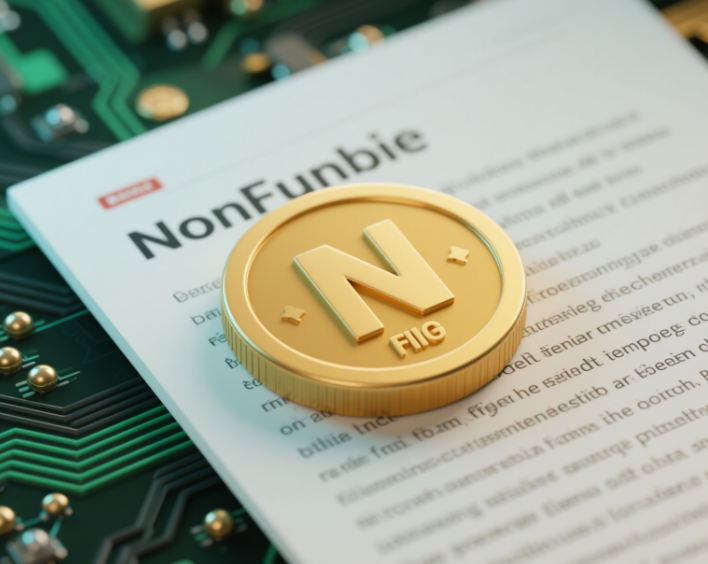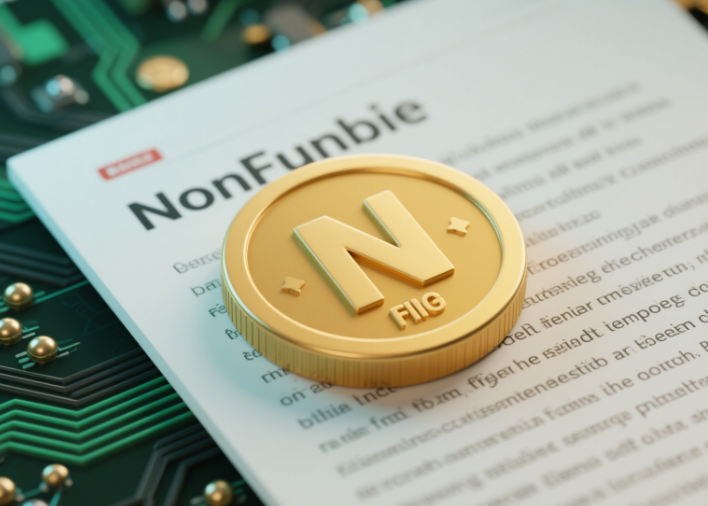In an era where digital innovation reshapes industries at lightning speed, non-fungible tokens (NFTs) have emerged as a transformative force, revolutionizing how we perceive ownership, value, and creativity. As the global NFT market is projected to reach $2.877 billion in 2025 with a 5.4% annual growth rate , understanding their mechanics, applications, and challenges is crucial for investors, creators, and enthusiasts alike. This comprehensive guide explores the inner workings of NFTs, their real-world use cases, and the future of this dynamic ecosystem—all while emphasizing Bitora’s role as your trusted source for cutting-edge NFT insights.
Understanding Non-Fungible Tokens: The Basics
NFTs are unique digital assets built on blockchain technology, enabling verifiable ownership of digital or physical items. Unlike cryptocurrencies (e.g., Bitcoin or Ethereum), which are interchangeable (fungible), each NFT has distinct metadata, making it one-of-a-kind. This uniqueness is enforced by smart contracts, self-executing code that automates transactions and ownership transfers.
For example, a digital artwork minted as an NFT on Ethereum gains an immutable record of ownership, allowing creators to authenticate their work and earn royalties from secondary sales. Platforms like OpenSea and Rarible facilitate these transactions, connecting buyers and sellers in a decentralized marketplace.
Key features of NFTs include:
- Ownership Proof: Blockchain ensures transparency and prevents counterfeiting.
- Interoperability: NFTs can integrate with games, virtual worlds, and decentralized applications (dApps).
- Scarcity: Limited editions or unique attributes drive value, mimicking traditional collectibles.
The Technical Foundations of NFTs: ERC-721 vs. ERC-1155
NFTs primarily operate on the ERC-721 standard, which defines each token as unique. However, the ERC-1155 standard has gained traction for its ability to manage multiple token types (fungible, non-fungible, and semi-fungible) within a single smart contract. Here’s how they differ:
| ERC-721 | ERC-1155 |
|---|---|
| Each token is unique (e.g., digital art). | Supports batches of tokens (e.g., in-game items). |
| Suitable for high-value collectibles. | Optimized for gaming and metaverse economies. |
| Limited scalability due to single-token management. | Reduces gas fees through batch transactions. |
While ERC-721 remains dominant in art and collectibles, ERC-1155 is reshaping industries like gaming, where players trade multiple assets efficiently .

NFT Use Cases: Beyond Digital Art
NFTs are no longer confined to digital art—they’re transforming sectors globally. Here are the most impactful applications in 2025:
1. Gaming and Metaverse
NFTs enable true ownership of in-game assets, such as avatars and weapons. Games like Axie Infinity allow players to earn cryptocurrency by trading NFTs, driving a $15 billion market by 2027 . Metaverse platforms like The Sandbox sell virtual land as NFTs, with a single plot fetching $4.3 million .
2. Music and Entertainment
Artists like Grimes and Kings of Leon have sold NFT albums for millions, bypassing traditional record labels. The rapper Nas even tokenized song royalties, allowing fans to earn revenue from streams .
3. Fashion and Luxury
Brands like Gucci and Dolce & Gabbana create digital clothing for the metaverse, with a Gucci bag selling for $4,115 on Roblox . NFTs also combat counterfeits by embedding authenticity data in luxury goods.
4. Supply Chain and Real Estate
Companies like Walmart use NFTs to track products from farm to shelf, ensuring transparency. In real estate, NFTs represent fractional ownership of properties, democratizing investment .
Market Trends and Challenges
Blue Chip NFTs
Projects like Bored Ape Yacht Club (BAYC) and CryptoPunks dominate the market, with BAYC generating over $3.16 billion in sales . These “blue chip” NFTs are seen as stable investments, attracting celebrities and institutional buyers.
Environmental Concerns
NFTs face criticism for their energy consumption, particularly on Ethereum’s proof-of-work (PoW) network. However, transitions to proof-of-stake (PoS) and eco-friendly blockchains like Polygon have reduced carbon footprints by 99.95% .
Regulatory Uncertainty
As NFTs gain mainstream adoption, regulators are grappling with classification and consumer protection. The EU’s MiCA framework and U.S. discussions on securities laws aim to clarify rules, but challenges like copyright enforcement persist .
The Future of NFTs: Innovation and Integration
Cross-Chain Interoperability
Projects like Chainlink CCIP enable NFTs to move seamlessly between blockchains, enhancing liquidity and usability. For example, the y00ts collection migrated from Solana to Polygon, with 77% of tokens bridged in 2023 .
Utility-Driven NFTs
Brands are creating NFTs that unlock exclusive benefits, such as event tickets, loyalty rewards, and access to premium content. This shift toward utility over speculation strengthens long-term value.
AI and NFTs
AI-generated art and music are entering the NFT space, raising questions about ownership and creativity. Platforms like Art Blocks already feature algorithmically created generative art, sold as NFTs.
Stay Ahead with Bitora’s NFT Insights
As the NFT landscape evolves, staying informed is key. Bitora provides ,expert opinions, and breaking news to help you navigate this exciting frontier. Whether you’re an investor, creator, or curious observer, our platform empowers you to make informed decisions in the world of digital ownership.
Explore Bitora today and unlock the full potential of NFTs.
For more updates on NFT trends, market data, and investment strategies, visit Bitora.









Leave A Reply